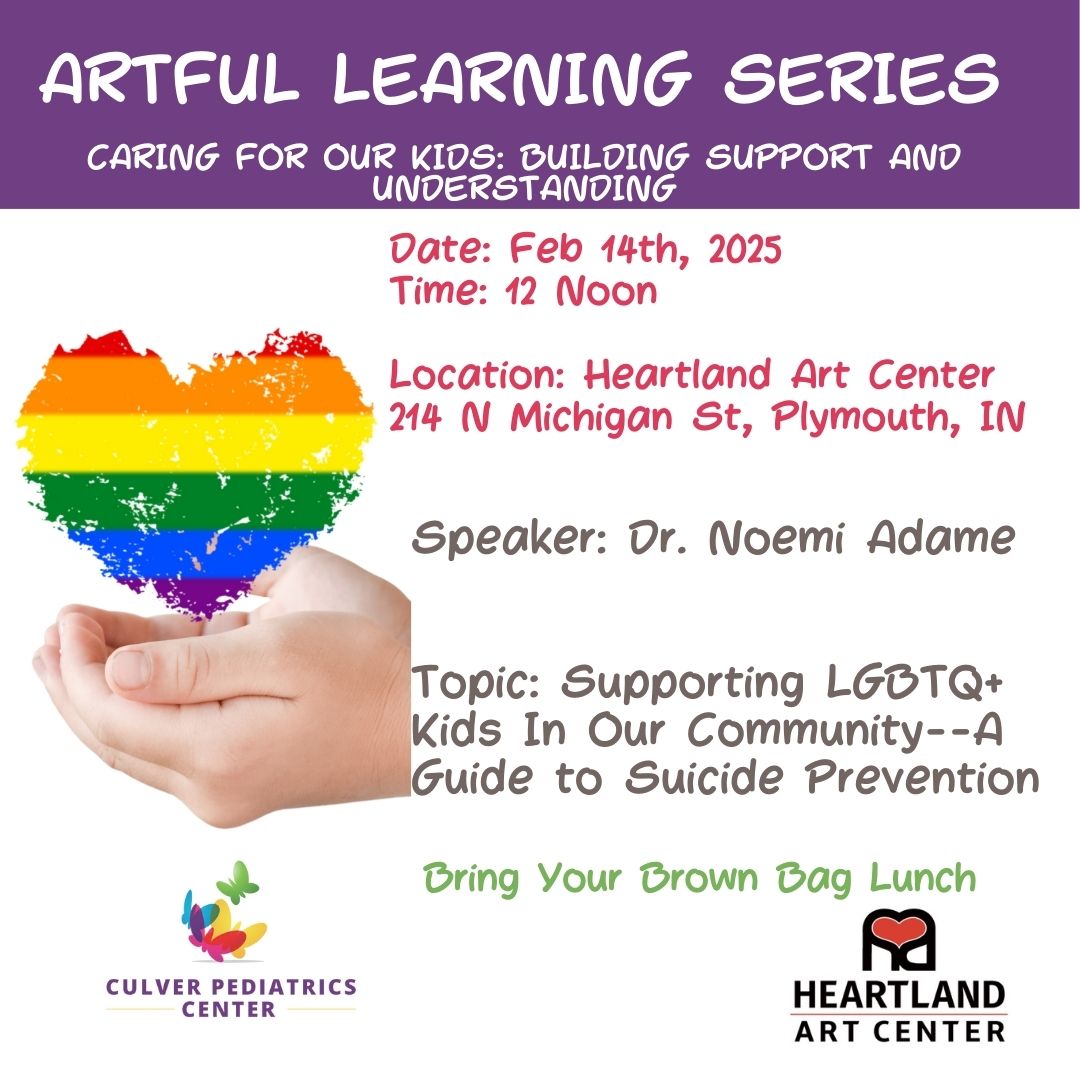This is NOT about being “woke”.
This is NOT about political alignment.
This is NOT about religion.
This is literally a matter of the life and death of the children and teens in our schools.
As a pediatrician serving children and families in our rural community, I have seen firsthand the struggles that some of our young people face, particularly those who identify as LGBTQ+.
I hear the stories about the bullying, intimidation, and fears. I hear their pain even though they mask with a smile during the school day. Bullying is often subtle and hidden.
We all want our children to grow up happy, healthy, and supported. Schools play an important role to ensure that every child—regardless of their sexual orientation or gender identity—feels safe and valued in their school environment.
The statistics are deeply concerning. LGBTQ+ youth are at a much higher risk of being bullied, facing discrimination, and struggling with mental health challenges. According to a Trevor Project 2023 survey, 18% of LGBT youth have attempted suicide, a rate 2 times higher than teenaged general population. It is important to note that LGBTQ+ youths are not inherently prone to suicide risk because of their sexual orientation or gender identity but rather because of how they are mistreated and stigmatized in society. Studies show that LGBTQ+ youths with supportive families, communities, and schools reported lower rates of attempting suicide.
These statistics aren’t just numbers; they represent the lives of children and teens who are part of our community and attend our schools. Here are some key strategies I recommend for parents to ensure their child feels supported when they come out to them.
Creating Safe and Inclusive Environments
Schools play a central role in the emotional and mental well-being of children. For LGBTQ+ students, a supportive school environment can be the difference between thriving and struggling. One of the most immediate ways that schools can help is by fostering an atmosphere of inclusion and respect for all students. Simple steps such as implementing anti-bullying policies that specifically mention sexual orientation and gender identity, training teachers and staff to recognize and address bullying, and promoting understanding through inclusive curriculums can go a long way in making LGBTQ+ students feel seen and supported.
Education and Awareness
Many children in rural communities may not have had exposure to or education about LGBTQ+ issues. Educating students, teachers, and staff about what it means to be LGBTQ+ can break down barriers of ignorance and prejudice. It’s important that we start the conversation early, helping children understand that there is no “one way” to be a boy, a girl, or anything in between. Boys cry. Girls play sports. Schools can promote empathy by incorporating curricula that focus on kindness, acceptance, and respect.
Support Systems
Beyond policies and education, providing tangible support for LGBTQ+ youth is vital. This could mean having a designated counselor trained to work with LGBTQ+ students, creating support groups or clubs where students can safely express themselves, and ensuring that LGBTQ+ students have access to mental health resources. Gay-Straight Alliance Clubs are a way to start, as these clubs DO NOT need to be spearheaded by students or teachers who identify as LGBTQ. Anyone can start a club in efforts to support LGBTQ students. Teachers and staff can be a first line of defense in identifying students who may be struggling, but they need the tools and resources to help.
Collaboration with Parents and the Community
As we move toward creating supportive environments in our schools, it’s essential to recognize the role that parents and the broader community such as doctors, health professionals, and counselors play in the well-being of LGBTQ+ youth. By fostering open communication and offering support to families, we can ensure that LGBTQ+ students receive the care and affirmation they need at home as well as in school. A community that stands together can be a source of strength for these young people.
To educate and implement inclusive programs, some schools need the help of professionals. Dr Lulu’s Life Coaching Lounge offers support through her AllyBridge Connection Program. AllyBridgeConnection (ABC) builds bridges of understanding and support within the workplace, prioritizing inclusivity and allyship. The Trevor Project also offers training designed for youth-serving professionals to help prevent suicide amongst LGBTQ+ young people.
As a pediatrician, my job is to care for the health of children—physically, mentally, and emotionally. It’s heartbreaking to witness the pain that bullying, isolation, and rejection can cause in young people’s lives in our rural community. But we have the power to change this.
By working together—schools, families, and the community—we can create an environment where every child, no matter their gender identity or sexual orientation, can grow up feeling valued, supported, and safe.
Our children are the future of Marshall County. Let’s make sure they have the chance to live that future without fear.
To start the conversation, join us for a Lunch and Learn at 12 p.m. on Feb 14th at Heartland Art Center. The topic will be: Supporting LGBTQ Children and Teens in Our Community and Schools: An Ally’s Primer to Prevent Suicide” Bring your own lunch. The Heartland Art Center will be providing an art experience at no-cost for attendees.
—
Dr. Noemi Adame, also known as the Veggies Over Pills doctor, is a board-certified pediatrician and holistic wellness expert. She is the owner of Culver Pediatrics Center, an LBGTQ-affirming practice that aims to transform children’s mind, body, spirit health by empowering and educating families, communities, and schools in holistic wellness. Visit their website to join the Culver Peds family:
www.CulverPediatrics.com.


